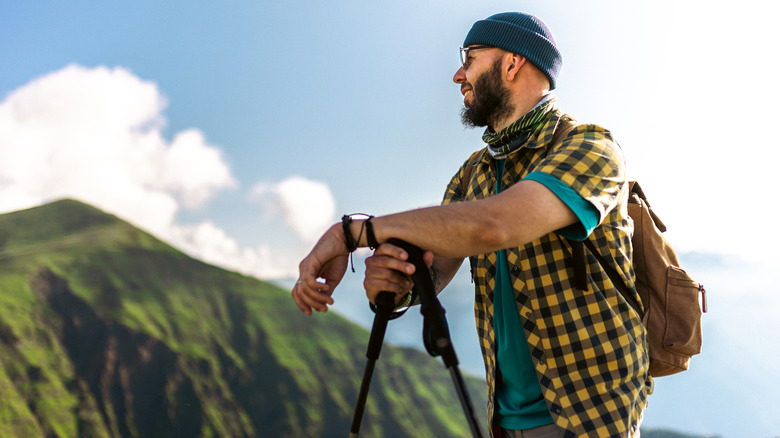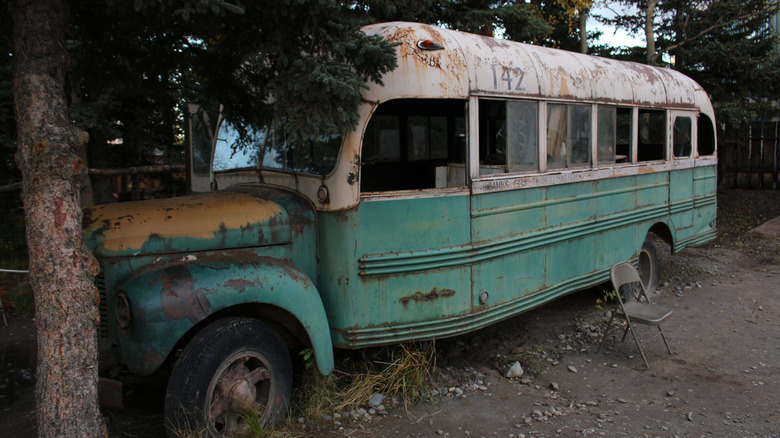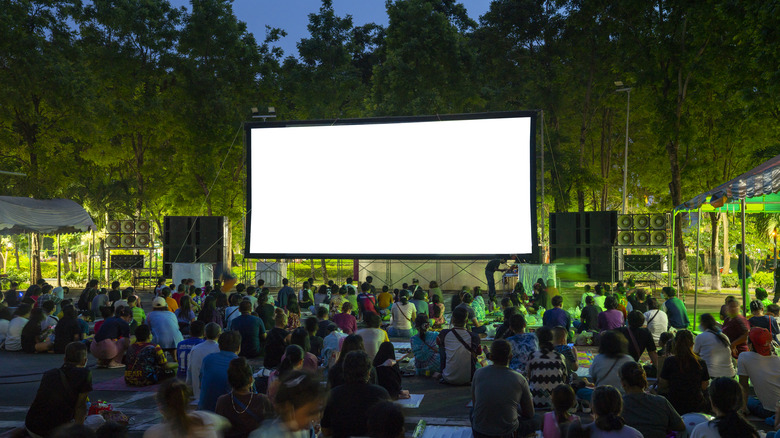This Inspirational Movie Is Beloved By Hikers And Travelers For Good Reason
Nearly two decades after the movie hit theaters, the 2007 indie drama "Into the Wild" enjoys cult status among diehard fans. "Into the wild had me pumped up to do something like he did," writes one user on a Reddit forum about favorite travel movies. "Into the Wild- incredible movie and book," adds another. In a similar forum about favorite nature and backpacking films, a user remarks: "I especially loved into the wild, that movie is a masterpiece and one of my favorite movies ever."
These movie buffs are not alone: The film review site Rotten Tomatoes still gives "Into the Wild" an 83% positive rating, a score it describes as "certified fresh." "A dream movie," raved the Financial Times. Wrote the Guardian: "There is food for thought and food for every kind of feeling in Sean Penn's outstanding film." And Empire Magazine: "With the whole of America as his backdrop, Penn pulls off his most ambitious movie yet. The result is a beautiful and thought-provoking road movie."
In many ways, these accolades make sense: The film is based on the true story of Christopher McCandless, a young adventurer who cut up his credit cards, dropped out of society, and wandered the backwoods of North America to live off the land. "Into the Wild" is a vivid adaptation of Jon Krakauer's bestselling nonfiction book of the same name, and it became a kind of passion project for longtime movie star Sean Penn. The film was nominated for two Academy Awards and a host of other honors. As slow travel becomes more than a passing trend, and many travelers fantasize about long stints in the wilderness, "Into the Wild" is among the most credible illustrations of what that could look like — including all the bad parts.
The mixed emotions behind 'Into the Wild' (spoilers ahead)
As the movie reflects, the real Christopher McCandless grew up in a well-to-do family in suburban Virginia. He left home in 1990 and started life as a "tramp," hitchhiking across the United States and running the Colorado River in a canoe. He worked odd jobs, wrote prolifically in his journal, and eventually made his way to Alaska in 1992. He ventured into the Alaskan outback alone, armed with a handful of supplies and a .22 rifle, and he sheltered in an abandoned bus for about 114 days before dying. He was 24 years old.
The story became famous because of Jon Krakauer, the mountain climber and author behind the nonfiction Everest thriller "Into Thin Air." Krakauer recounts McCandless' complicated life, from his rejection of material things to his death-defying excursions in the American West to his final days attempting to survive in a remote corner of Alaska. The energetic young man wanted to live free, endured many hardships, and he kind to everyone he met. Krakauer dedicates a chapter of the book to his own experience, solo-climbing a mountain called Devils Thumb near the border of Alaska and British Columbia, to explain how he understands risk-taking. Krakauer asserts that McCandless made understandable mistakes that led to his death.
Other critics were less forgiving, framing McCandless as reckless, immature, and underprepared. The two-and-a-half-hour-long film shows events from McCandless' perspective, which may come off as romantic and self-indulgent, but it also portrays the consequences of his choices: McCandless is assaulted by another man, took several scary falls, and struggled to forage for food. Of the 15 survival skills everyone needs to know, McCandless misused several.
The enduring power of 'Into the Wild'
Like Krakauer, many of the movie's fans are still drawn to McCandless' incandescent spirit, and the story's tragic ending doesn't deter them. As McCandless, actor Emile Hirsch is charismatic and childlike, and the film is beloved for its gorgeous, naturalistic imagery, thanks to cinematographer Eric Gautier. Penn wrote the screenplay and directed the film, striking a delicate balance between empathy and judgment. Plenty of people feel the same urge — to drop everything and flee to untamed lands, where they can live a simpler life and appreciate every moment, and "Into the Wild" is a compelling reenactment of one man's attempt.
One could also argue that McCandless grew up in the wrong era. Back in 1990, there was no such thing as a consumer GPS, texting, or the "digital nomad" lifestyle. An entire industry has grown up around off-the-grid living, and a few YouTube videos could have helped him enormously. It's possible that McCandless would have made the same stubborn decisions in the 2020s, but today, bikepackers, thru-hikers, and multi-year sailboaters are proving that you can enjoy a lot of freedom in the 21st century without risking total isolation. If you are thinking of really getting away for a few months, here are simple steps to take to prepare yourself for a long-distance hike.


